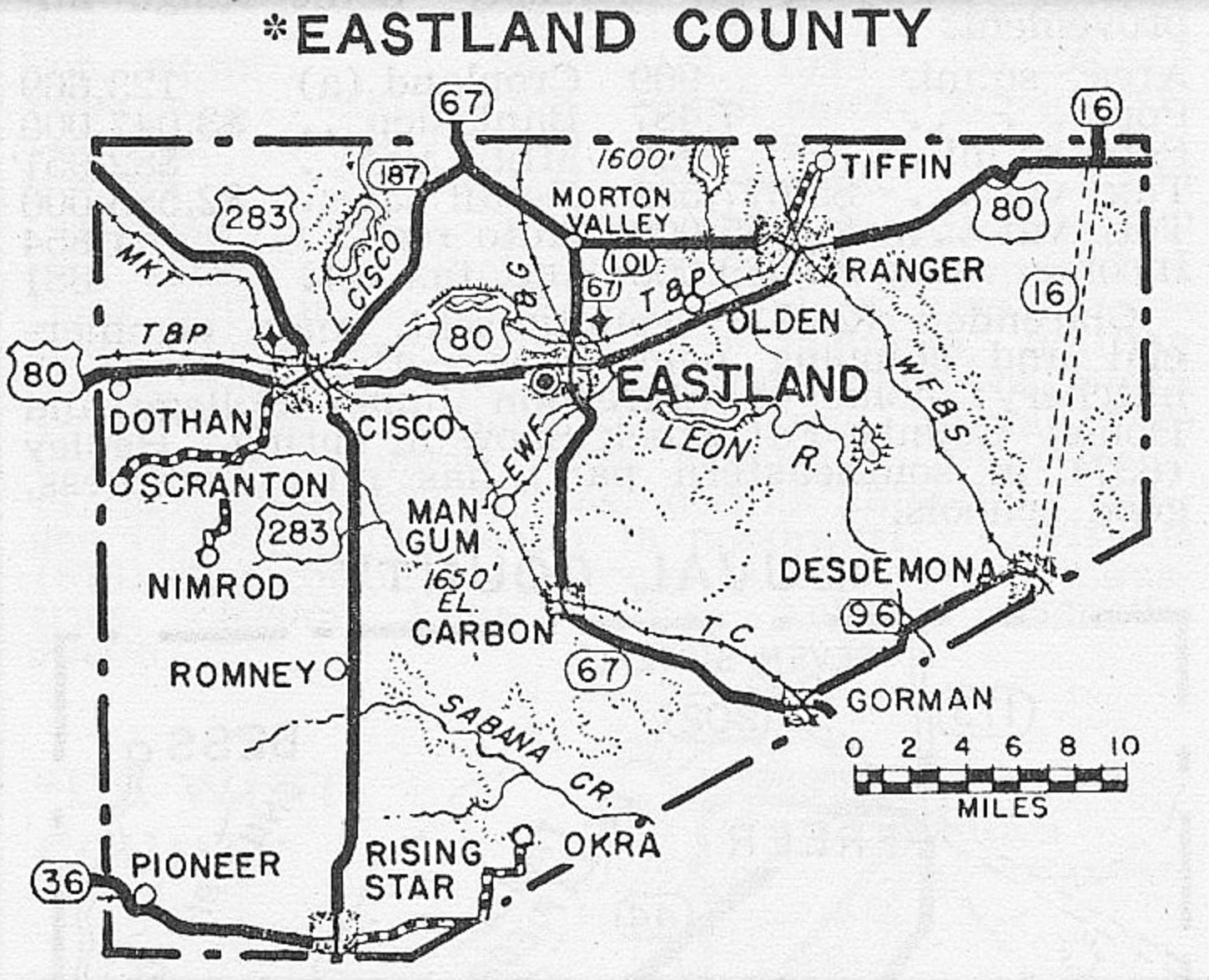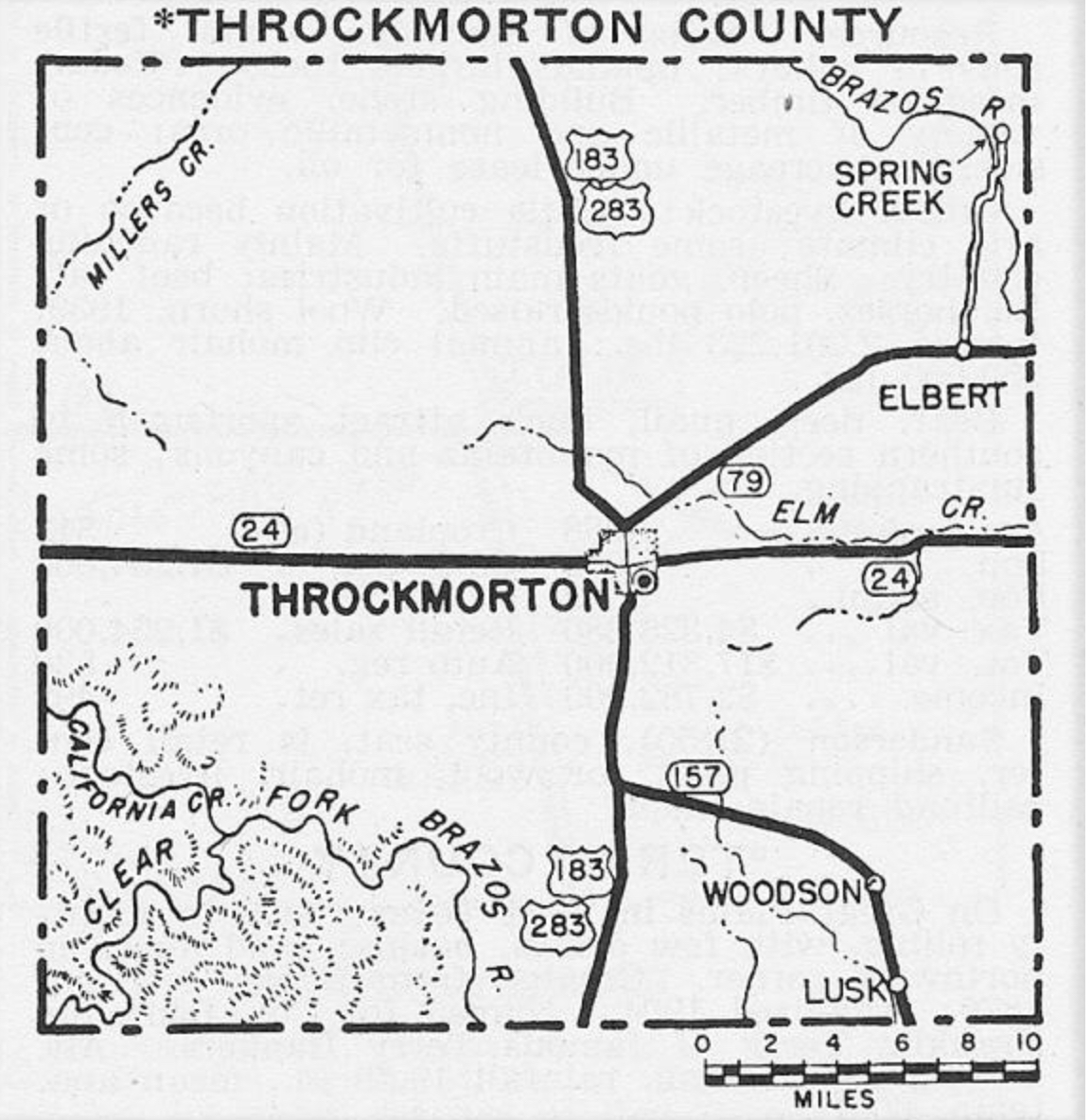In the spring of 1945, the war in Europe was nearing an end, and attention was turning to finishing the job against the Japanese in the Pacific. Both conflicts were thousands of miles away from the rural Texas communities of Woodson in Throckmorton County and Desdemona in Eastland County.
While both communities sent people to the armed forces, the daily dangers of wartime were hardly a consideration.
On March 23 and 24, 1945, Woodson and Desdemona were "bombed" by the Japanese, though no damage was done in either community.
The Desdemona "Bomb"
On March 23, C.M. "Pug" Guthery, just shy of his 15th birthday, was getting off the afternoon Desdemona school bus that had taken him home. In the southeastern sky, he saw what looked like a giant basketball drifting quickly to earth.
With youthful enthusiasm, Guthery began chasing the object on foot, running almost two miles before the balloon finally fluttered to the ground. By the time he reached the object, another school bus also had arrived and several children were examining the contraption. The balloon was gray, and the only marking on it was a large, fading rising sun on its top.
Guthery recalled later that he didn't follow the lead of the other children. "The thing smelled bad," he said, "something like creosote. So I didn't fool with it."
The other youngsters, however, busily gathered souvenirs. Some cut lengths of the quarter-inch grass rope that encircled the balloon, and others took pieces of the balloon itself. "It looked like leather," Guthery recalled. "Whatever it was, it was a tough material."
Government officials arrived in Desdemona the day after the discovery to pick up the balloon, and they came to the school to ask all the students to return the souvenirs they had taken from it. "The pieces were needed to reconstruct it," Guthery said.
After that, no more was heard of the balloon, and it didn't last as a topic of conversation for more than a couple of days.
Huge Balloon Found near Woodson
Sixty miles to the northwest the following day, Ivan Miller, a cowboy on the Barney Davis ranch eight miles north of Woodson in southeast Throckmorton County, was checking cattle near his home about 8:30 a.m. when he came upon a collapsed balloon.
His widow, Florence Miller, recalled later that Ivan described the balloon "as big around as a house." The balloon also had a large rising sun painted on its top, and several smaller versions of the sun were located around the bottom.
The postmaster was notified soon after the discovery, and in the early afternoon, government officials arrived to take charge of the situation. As at Desdemona, school children showed great interest. Several visited the site and took souvenirs from the balloon. And again, government officials requested that the pieces be returned.
Balloon Attack Plans
What Guthery and Miller found were two of about 6,000 laminated paper balloons that had been released during a six-month period beginning in November 1944 by the Japanese. The balloons had been made by Japanese schoolgirls from paper and paste.
The balloon bomb project may have been planned in retaliation for Col. Jimmy Doolittle's April 1942 raid against Tokyo. The intent was to demoralize the American public, perhaps to cause civilian deaths and to start hundreds of fires in the forests of the Pacific Northwest.
The Japanese figured that the Fugo balloon bombs, about 70 to 80 feet high, 30 feet in diameter and filled with hydrogen, would ride eastward on the jet stream, each carrying a couple of incendiary bombs and a 33-pound antipersonnel bomb. When they descended, they would explode, start hundreds of fires, and frighten – and perhaps kill – Americans in the process.
About 360 bombs were eventually found in North America, from the Aleutian Islands south of Alaska to Mexico and as far east as Detroit, Mich.
No fires were reported. However, six people in southern Oregon, a minister's wife and five children, were killed when the children began playing with a device they discovered while on a fishing outing. They were the only Americans killed in the continental United States by enemy action in World War II.
American officials blacked out news of the balloon bombardment in the belief that if the Japanese thought the effort unsuccessful, they would stop releasing the balloons. The strategy apparently worked, because the Japanese stopped releasing the balloons in April 1945, although some balloons were found in Canada as late as July.
— based on an article written by Mike Kingston, then editor, for the Texas Almanac 1992–1993.
• Link to Desdemona town page.



